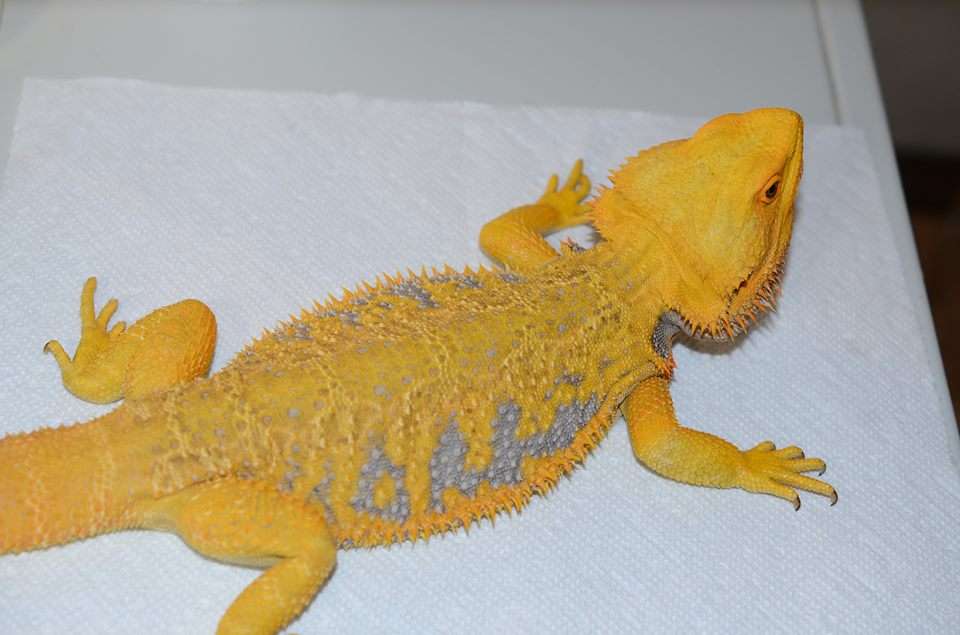
Description:
Scientific name: Pogona
Life span: 10 to 15 years
Bright yellow to light tan are the color ranges of citrus bearded dragons. Their flat bodies are covered in spikes and nodules along the sides, neck, and legs. Femoral pores on the hindquarters are clearly more developed in males, which is a clear sex diagnostic.

Native Region/Habitat
In their natural habitats, bearded dragons inhabit Australia’s savannahs and grasslands.
Behavior:
Like all of their bearded brethren, citrus bearded dragons are curious, calm, and simple to manage. However, as with any creature, you must always treat it with the utmost care.
Care As a pet/In captivity:
Tank: Citrus bearded dragons can reach a total length of 24 inches; therefore, their enclosure must be large enough to contain them. All-glass tanks must be at least 40 gallons in size for adult bearded dragons.
Beardies enjoy holding on to larger branches with solid bark, but they don’t climb as much as some other reptiles. Nonetheless, the enclosure’s breadth should be greater than its height.
Heating (Temperature & Humidity): Bears maintain their body temperature via a variety of heat sources. They require a location for basking that should remain between 88 and 100 degrees Fahrenheit. Between 75 and 85 degrees Fahrenheit should be maintained on the tank’s colder side.
The ideal range for humidity is 20% to 40%. Although they don’t need as much moisture as some other reptiles do, the right humidity helps with shedding and skin health in general. For monitoring purposes, you can purchase a thermometer and a hydrometer to keep in the cage.
Lighting: UVB light is necessary for bearded dragons to absorb calcium and vitamin D. Twelve hours a day should be spent with these lights on. There is no need for illumination at night for these lizards, but you should constantly keep the temperature above 65 degrees F.
Feeding: As an omnivore, your beardie must consume both plant and animal materials to stay alive. They eat gut-filled insects for the majority of their diet, but they also adore greens! Juveniles will consume largely insects—as many as they can handle—every day while they are growing.
Table





